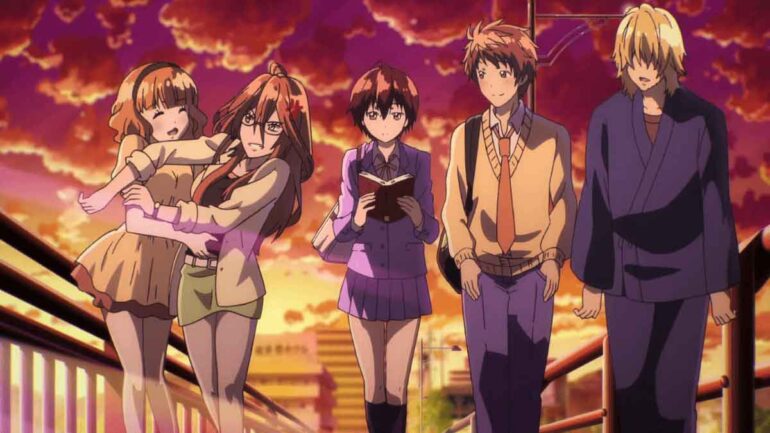In the realm of entertainment, few mediums possess the immersive allure and global impact of anime. Originating from Japan, anime has transcended cultural and linguistic barriers to captivate audiences across the globe. From its visually stunning animation to its richly diverse narratives, anime continues to fascinate and enchant viewers of all ages. In this exploration, we delve into the essence of anime – its origins, evolution, and enduring appeal – to uncover the secrets behind its enduring popularity. Read more franceche valturf.
**Origins and Evolution**
The origins of anime can be traced back to the early 20th century, when Japanese artists and animators began experimenting with animation techniques inspired by Western cartoons. However, it was not until the post-World War II era that anime truly began to take shape as a distinct art form. Pioneering animators like Osamu Tezuka, often hailed as the “God of Manga,” revolutionized the industry with works such as “Astro Boy” and “Kimba the White Lion,” setting the stage for the explosion of creativity that would follow.
Throughout the decades, anime has undergone a remarkable evolution, reflecting changes in society, technology, and artistic trends. The 1980s and 1990s witnessed a golden age of anime, marked by the emergence of iconic franchises like “Akira,” “Ghost in the Shell,” and “Sailor Moon.” These groundbreaking works pushed the boundaries of animation and storytelling, captivating audiences both in Japan and abroad.
In the 21st century, anime has continued to thrive, fueled by advancements in digital animation technology and the proliferation of streaming platforms. From the epic fantasy worlds of “Attack on Titan” and “My Hero Academia” to the introspective dramas of “Your Lie in April” and “March Comes in Like a Lion,” anime offers a vast and diverse array of genres and styles to suit every taste.
**Global Impact**
While anime originated in Japan, its influence has spread far beyond its shores to become a global phenomenon. Thanks to the efforts of passionate fans and dedicated localization teams, anime has been translated into numerous languages and distributed to audiences around the world. The rise of the internet and streaming platforms has further accelerated this trend, making it easier than ever for fans to access and enjoy their favorite series.
The global appeal of anime can be attributed to its universal themes and relatable characters, which resonate with audiences from diverse cultural backgrounds. Whether it’s the thrilling adventures of “Dragon Ball Z” or the tender romance of “Spirited Away,” anime speaks to the human experience in a way that transcends language and culture. It is this universality that has allowed anime to find a dedicated fanbase in every corner of the globe.
Moreover, anime has had a profound impact on popular culture, influencing everything from fashion and music to film and literature. Cosplay, the practice of dressing up as characters from anime and manga, has become a global phenomenon, with conventions and events held in cities around the world. Anime-inspired fashion trends, such as Lolita and Harajuku street style, have also gained traction outside of Japan, further cementing anime’s place in the global zeitgeist.
**Cultural Influence**
Beyond its entertainment value, anime has also played a significant role in shaping perceptions of Japanese culture and society. Through its depictions of traditional customs, folklore, and values, anime offers viewers a window into the rich tapestry of Japanese life. Series like “Rurouni Kenshin” and “Samurai Champloo” explore themes of honor, loyalty, and redemption, drawing upon Japan’s historical legacy of samurai warriors and feudal lords.
Moreover, anime has served as a vehicle for addressing social and political issues, providing a platform for artists to express their views on topics such as war, environmentalism, and identity. Films like “Grave of the Fireflies” and “Princess Mononoke” confront the horrors of war and industrialization, challenging viewers to reflect on the consequences of human greed and ambition.
In recent years, anime has also become increasingly inclusive and diverse, featuring characters from a wide range of backgrounds and experiences. Series like “Yuri on Ice” and “Given” explore themes of LGBTQ+ identity and representation, offering nuanced portrayals of love and relationships that resonate with viewers around the world.
**The Future of Anime**
As we look to the future, the prospects for anime seem brighter than ever. Technological advancements continue to push the boundaries of animation, allowing for increasingly sophisticated visuals and immersive storytelling experiences. Virtual reality and augmented reality technologies hold the promise of new interactive forms of anime content, allowing fans to step into the worlds of their favorite series like never before.
Moreover, the globalization of the anime industry has opened up new opportunities for collaboration and creativity. International co-productions and partnerships are becoming increasingly common, bringing together artists and creators from different cultures to collaborate on new and exciting projects. This cross-pollination of ideas and perspectives promises to enrich the world of anime and ensure its continued relevance in the years to come.
In conclusion, anime stands as a testament to the power of creativity, imagination, and storytelling to transcend boundaries and unite people from all walks of life. From its humble beginnings in Japan to its status as a global cultural phenomenon, anime has captured the hearts and minds of millions around the world. As we embark on this journey through the vibrant and diverse world of anime, one thing remains clear: its impact is far-reaching, its influence profound, and its legacy enduring. See more secret class hentai3z.


